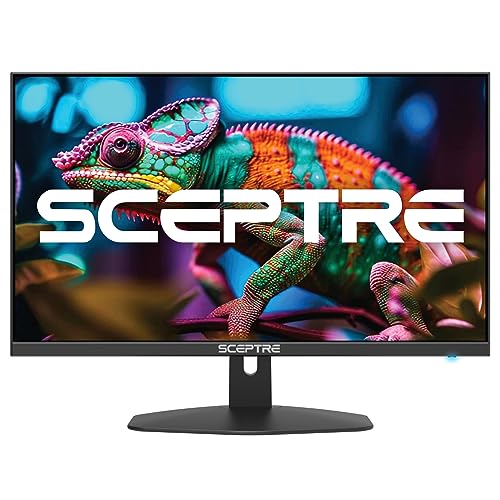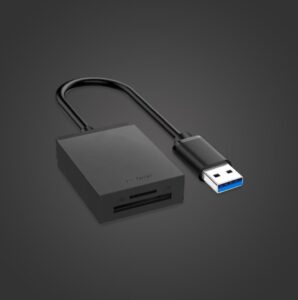When selecting the perfect monitor for your needs, it’s crucial to understand the terminology used to describe the features listed in the price tags of different models. Dive into the definitions to make an informed decision that suits you best, unlocking the perfect match for your requirements. Start your monitor hunt equipped with the knowledge of key characteristics to find the ideal fit for you.
Also, you need to understand how large space you want to occupy on your desk and what diagonal the image display surface must-have.
Here we had listed out some of the best quality monitors that are present below.
- An improved viewing experience: Experience a high 100Hz refresh rate across your work with a TÜV Rheinland 3-star* certified...
- High refresh rate: 100Hz refresh rate delivers less flicker, more seamless scrolling and smoother motion.
- ComfortView Plus: Minimizes harmful blue light exposure without sacrificing color accuracy with Dell’s always on, built-in...
- Tidy and organized: Keep your space neat with this small footprint monitor featuring a built-in power supply unit and cable...
- More flexibility: Easily tilt the monitor to get just the right viewing angle or hook it up with a compatible VESA mount.
- CRISP CLARITY: This 22 inch class (21.5″ viewable) Philips V line monitor delivers crisp Full HD 1920x1080 visuals. Enjoy...
- 100HZ FAST REFRESH RATE: 100Hz brings your favorite movies and video games to life. Stream, binge, and play effortlessly
- SMOOTH ACTION WITH ADAPTIVE-SYNC: Adaptive-Sync technology ensures fluid action sequences and rapid response time. Every frame...
- INCREDIBLE CONTRAST: The VA panel produces brighter whites and deeper blacks. You get true-to-life images and more gradients with...
- THE PERFECT VIEW: The 178/178 degree extra wide viewing angle prevents the shifting of colors when viewed from an offset angle, so...
- An improved viewing experience: Experience a high 100Hz refresh rate across your work with a TÜV Rheinland 3-star* certified...
- High refresh rate: 100Hz refresh rate delivers less flicker, more seamless scrolling and smoother motion.
- ComfortView Plus: Minimizes harmful blue light exposure without sacrificing color accuracy with Dell’s always on, built-in...
- Tidy and organized: Keep your space neat with this small footprint monitor featuring a built-in power supply unit and cable...
- More flexibility: Easily tilt the monitor to get just the right viewing angle or hook it up with a compatible VESA mount.
- Incredible Images: The Acer KB272 G0bi 27" monitor with 1920 x 1080 Full HD resolution in a 16:9 aspect ratio presents stunning,...
- Adaptive-Sync Support: Get fast refresh rates thanks to the Adaptive-Sync Support (FreeSync Compatible) product that matches the...
- Responsive!!: Fast response time of 1ms enhances the experience. No matter the fast-moving action or any dramatic transitions will...
- 27" Full HD (1920 x 1080) Widescreen IPS Monitor | Adaptive-Sync Support (FreeSync Compatible)
- Refresh Rate: Up to 120Hz | Response Time: 1ms VRB | Brightness: 250 nits | Pixel Pitch: 0.311mm
- Modern, lifestyle-inspired design with ultrathin bezels let you enjoy the stunning screen with less distraction.
- Enjoy impressive audio with the integrated dual 5W speakers with a wide dynamic range. Easy options of 5 preset and 1 customizable...
- Experience consistent vibrant colors across a wide viewing angle enabled by In-plane switching technology with 99% sRGB color...
- Connect with ease with convenient primary connections and easy side access to secondary connections that offer multiple input...
- Seamlessly switch between streaming and casual gaming with the built-in dual HDMI connectivity ports.
- CRISP CLARITY: This 23.8″ Philips V line monitor delivers crisp Full HD 1920x1080 visuals. Enjoy movies, shows and videos with...
- INCREDIBLE CONTRAST: The VA panel produces brighter whites and deeper blacks. You get true-to-life images and more gradients with...
- THE PERFECT VIEW: The 178/178 degree extra wide viewing angle prevents the shifting of colors when viewed from an offset angle, so...
- WORK SEAMLESSLY: This sleek monitor is virtually bezel-free on three sides, so the screen looks even bigger for the viewer. This...
- A BETTER READING EXPERIENCE: For busy office workers, EasyRead mode provides a more paper-like experience for when viewing lengthy...
- 1800R curve monitor the curved display delivers a revolutionary visual experience with a leading 1800R screen curvature as the...
- Hdmi, VGA & PC audio in ports
- High refresh rate 75Hz.Brightness (cd/m²):250 cd/m2
- Vesa wall mount ready; Lamp Life: 30,000+ Hours
- Windows 10 Sceptre Monitors are fully compatible with Windows 10, the most recent operating System available on PCs.Brightness:...
- ComfortView Plus: Reduce blue light emissions without sacrificing color accuracy with TUV Eye Comfort 4-star rated Dell's Improved...
- Vibrant visuals: Enjoy consistent color and clarity with 99% sRGB color coverage and 1500:1 contrast ratio, while a 100Hz refresh...
- Comfort from every angle: Tilt, swivel, pivot and adjust the height of your monitor to match any activity, in any space.
- Re-engineered sound quality: Enjoy more detailed sound with spacious audio featuring greater output power, deeper frequency...
- Game or watch effortlessly: Seamlessly switch between streaming and casual gaming with the built-in dual HDMI connectivity ports.
- TRUE COLOR VIVID DETAIL : The 24 inch 100hz computer gaming monitor cover 99% of the SRGB color gamut and 10bit gray level over...
- EXTREMELY VIEWING COMFORT: Find your best viewing position and stay comfortable by tilting the screen up to 5 degrees forward or...
- ULTRA SLIM DESIGN: The 24" pc monitor feature three-sided slim bezels and a compact footprint, 178°wide viewing angle and...
- SMOOTH FAST VISUALS: The 24 inch mointor combines a refresh rate of 100hz with sync compatible, A smooth-fast, tear-free...
- MULTI-FUNCTIONAL APPLICATION: VESA 100x100mm for versatile mounting, and multiport options (HDMI, VGA, Audio Output) for diverse...
- 100% sRGB Color Gamut: With 100% sRGB, our display reveals an astonishing brightness and variance in red, green, and blue color...
- DP & HDMI Ports: Two HDMI ports and one DisplayPort port provide up to 100Hz refresh rate, refining picture clarity in all...
- Blue Light Shift: Blue Light Shift reduces blue light, allowing you to comfortably work, watch, or play applications without...
- Built-in Speakers: Perfectly suited to work & gaming settings, built-in speakers deliver robust & smooth audio while saving space...
- FPS-RTS Game Modes: FPS and RTS are Sceptre's custom set display settings built for an enhanced gaming experience. FPS (First...
What to Look for Before Buying Monitors?
Technologies: Ips, Va, or Tn?
Let’s start immediately to distinguish the various types of screens currently available in stores and see what are the technical characteristics to consider before buying one.
The first choice you need to make is on the type of panel: all the displays currently on the market are LCD (liquid crystal, with LED or fluorescent backlight) but are careful, not all LCDs are the same. Depending on the type of panel used, they can be distinguished in TN, IPS, and VA.
The TN monitor (Twisted Nematic abbreviation) are known for their shallow response times (up to 1 ms) and the fact that they are often available at a reasonable price. They are the most suitable for video games and for viewing 3D content.
The monitor IPS (In-Plane Switching), on the other hand, is more oriented to the world of productivity and multimedia, as they make the colors in a better than TN and much higher viewing angles, but response times almost always high.
VA monitors offer a proper viewing angle and good contrast but have not very low response times, and the color reproduction is not as perfect as on IPS panels. They can also suffer from the annoying ghosting effect.
They are divided into PVA (Patterned Vertical Alignment) and MVA (Multi-domain Vertical Alignment), which have even more marked blacks and contrasts than the former. This type of panel must be taken into consideration, especially in the workplace.
Unlike the world of televisions, in the PC monitor sector, it is difficult, if not almost impossible, to find models with OLED panels.
Image Quality
Each monitor can support higher or lower resolutions, or technologies that may or may not be useful in certain areas. Below I offer you some definitions of the essential characteristics of monitors.
Size and resolution – in monitors, you need not only look at the area, i.e., the number of inches, but also the solution, i.e., the maximum number of pixels that can make up the images on the screen.
The display sizes generally range from 18.5 ″ to over 30 ″, while as regards the resolutions we have several options available to us.
- HD monitors – the cheapest monitors available on the market today are those with HD resolution, equal to 1280 × 720 pixels in the 16: 9 format. To date, they are a bit anachronistic, and I do not recommend them unless you are very demanding and want to spend the bare minimum
- Full HD monitors – have a resolution of 1920 x 1080 pixels and currently represent the best solution in terms of quality-price. They are also ideal for gaming. The recommended dimensions for this type of display range from 21 ″ to 27 ″, also because if you play too closely on a large monitor, you risk significant eye strain.
- 2K monitors – have a resolution of 2560 x 1440 pixels and are particularly suitable for working with photos and videos. The recommended dimensions for this type of display range from 27 ″ upwards.
- 4K or UltraHD monitors – have a resolution of 3840 × 2160 pixels and are the best on the market today. They can be used in various areas, primarily the processing of photos and videos, but they are also useful for gaming. They must be associated with a computer and, above all, with a very performing video card. Otherwise, they end up being counterproductive (in the sense that to exploit their resolution fully, the performance of games and applications is “castrated”). The recommended dimensions for this type of display are at least 28 “.
- Response times – among the main features to look at before buying a monitor there are also response times, i.e., the number of milliseconds that a pixel takes to change its state on the screen (this parameter is fundamental for gaming, and it must be as low as possible if you need a monitor to play)
- Frame rate – this measure is used to denote the number of frames “rendered” every second by the computer graphics card (FPS) and establishes the fluidity of the animations and any movement. It is mainly used in video games or multimedia content. Unlike the refresh rate, it is not fixed, but it can vary according to the workload required by the software/video game.
- Refresh rate – represents the refresh rate of the image on the screen, i.e., the number of times the image is redrawn on display every second (measured in Hz). The last two parameters are best when they are higher. Also, Nvidia G-Sync and AMD FreeSync technologies have recently emerged among the most demanding players. They allow you to synchronize the frame rate to the screen refresh rate to avoid the reproduction of annoying artifacts (jargony defined as tearing or stuttering).
- HDR – stands for High Dynamic Range, and indicates the monitor’s ability to reproduce a broader range of colors, also including shades of shadows, and highlights that SDR (Standard Dynamic Range) monitors cannot show. It is an excellent innovation of recent times that you only find on medium-high and high-end monitors and which indicates, in short, that that particular model offers very high-quality static images. An HDR monitor can, for example, reproduce very bright lights and dark shadows in the same frame without burning the former or hiding the details of the latter.
Features
Choosing a monitor also includes a personal component, and it’s not just about image quality. As I said, one of the features you need to take into consideration is the panel dimensions also according to the space you have available. Still, there are also other features to take into consideration, which I list below.
- Glossy or matte display – displays can have a glossy or matte finish. Those with a flat surface avoid reflections, those with a polished finish instead have some more problems with reflections but ensure more vivid colors (therefore, in theory, they also tire the eyes more easily).
- Ports – most monitors currently on the market have HDMI and DVI inputs. In many cases, they also have VGA and display port inputs, while it is rarer to find displays that support thunderbolt connections. However, the most recommended type of connection at the moment is via HDMI. The important thing, before buying a monitor, is to make sure that it is 100% compatible with the video outputs of the computer. HDMI ports, for example, have various versions, and each version has different values as regards maximum data rate, color depth, and maximum supported resolution. More info about it is available on Wikipedia.
- Other features to consider – are those relating to the monitor’s energy consumption (which must be as low as possible), the presence of audio speakers integrated into the monitor (if it does not have external speakers) and the touch support that currently it is very rare but can be useful in systems such as windows 10. also I strongly recommend that you check the contrast level and the black depth of the display. These two values must be very high to have a better image rendering. To keep in mind, there is also the brightness level of the display, which is expressed in cd / m² ( more info here ). Monitors with g-sync and free sync panels are also spreading recently, and both geared towards gamers using video cards produced by n Nvidia and AMD, respectively. Although with different methods, the two technologies aim to eliminate the so-called “tearing” to make the movements more fluid, less serrated, and at the same time reduce the response time of the animations.














